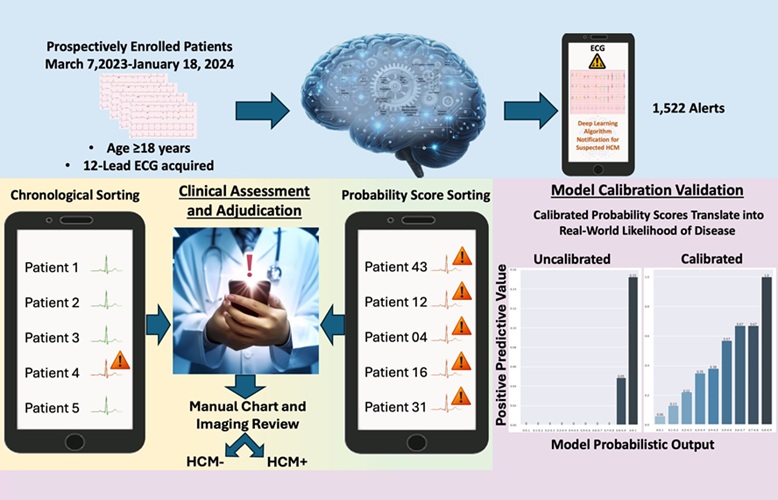Innovative Debridement Device Provides Uniform Skin Grafts
|
By HospiMedica International staff writers Posted on 02 Jul 2019 |

Image: A surgical skin graft recovery using the Amalgatome SD (Photo courtesy of Exsurco Medical).
An innovative skin grafting and wound debridement device glides effortlessly over the skin in a pulling motion to provide efficient wound debridement and consistent skin grafts.
The Exsurco Medical (Wakeman, OH, USA) Amalgatome SD features a unique 360° circular cutting head incorporated into a 15° angled ergonomic hand piece that allows the surgeon to safely maneuver over body contours and hard-to-reach areas with minimal user fatigue. Instead of using an oscillating back and forth cutting blade, the Excision circular ring blades recover skin grafts or debride the skin via precision cutting, spinning at high RPM. The result is consistent excision depth control when recovering skin grafts, in either two or four inch width strips.
The user can thus gently and smoothly pull the device towards them while performing the skin graft harvest or debridement; depth can be controlled in increments of .001”, ranging in thickness from 0.005” to 0.045”. The Amalgatome SD also requires less force than other powered excision instruments that require a sawing or pushing motion. Its contoured design glides over the epidermis and dermis with a 180° dissection range, with a maneuverability that simplifies handling of challenging body contours. The overall result is much more control of the excision.
“Exsurco has previously delivered products for tissue bank and processing companies that have helped to improve and simplify the procedures for donor allograft tissue recovery that increases yield, safety and comfort, while minimizing technician fatigue,” said Sara Ann MacKinlay, general manager of Exsurco Medical. “We are proud to introduce our new Amalgatome SD medical device for skin grafting and wound debridement to burn and trauma centers across the country for use on patients requiring these critical, lifesaving procedures. These products ultimately help increase the gift of tissue donation to touch more patients.”
Skin grafting serves two purposes - reducing the course of treatment needed and improving the function and appearance of the area of the body, which receives the skin graft. There are two types of skin grafts; a full thickness skin graft that consists of the epidermis and the entire thickness of the dermis, and a split-thickness skin graft that includes the epidermis and part of the dermis. Split-thickness grafts are frequently used as they can cover large areas and the rate of auto-rejection is low. The donor site heals by re-epithelialization from the dermis and surrounding skin and requires dressings.
Related Links:
Exsurco Medical
The Exsurco Medical (Wakeman, OH, USA) Amalgatome SD features a unique 360° circular cutting head incorporated into a 15° angled ergonomic hand piece that allows the surgeon to safely maneuver over body contours and hard-to-reach areas with minimal user fatigue. Instead of using an oscillating back and forth cutting blade, the Excision circular ring blades recover skin grafts or debride the skin via precision cutting, spinning at high RPM. The result is consistent excision depth control when recovering skin grafts, in either two or four inch width strips.
The user can thus gently and smoothly pull the device towards them while performing the skin graft harvest or debridement; depth can be controlled in increments of .001”, ranging in thickness from 0.005” to 0.045”. The Amalgatome SD also requires less force than other powered excision instruments that require a sawing or pushing motion. Its contoured design glides over the epidermis and dermis with a 180° dissection range, with a maneuverability that simplifies handling of challenging body contours. The overall result is much more control of the excision.
“Exsurco has previously delivered products for tissue bank and processing companies that have helped to improve and simplify the procedures for donor allograft tissue recovery that increases yield, safety and comfort, while minimizing technician fatigue,” said Sara Ann MacKinlay, general manager of Exsurco Medical. “We are proud to introduce our new Amalgatome SD medical device for skin grafting and wound debridement to burn and trauma centers across the country for use on patients requiring these critical, lifesaving procedures. These products ultimately help increase the gift of tissue donation to touch more patients.”
Skin grafting serves two purposes - reducing the course of treatment needed and improving the function and appearance of the area of the body, which receives the skin graft. There are two types of skin grafts; a full thickness skin graft that consists of the epidermis and the entire thickness of the dermis, and a split-thickness skin graft that includes the epidermis and part of the dermis. Split-thickness grafts are frequently used as they can cover large areas and the rate of auto-rejection is low. The donor site heals by re-epithelialization from the dermis and surrounding skin and requires dressings.
Related Links:
Exsurco Medical
Latest Surgical Techniques News
- DNA Origami Improves Imaging of Dense Pancreatic Tissue for Cancer Detection and Treatment
- Pioneering Sutureless Coronary Bypass Technology to Eliminate Open-Chest Procedures
- Intravascular Imaging for Guiding Stent Implantation Ensures Safer Stenting Procedures
- World's First AI Surgical Guidance Platform Allows Surgeons to Measure Success in Real-Time
- AI-Generated Synthetic Scarred Hearts Aid Atrial Fibrillation Treatment
- New Class of Bioadhesives to Connect Human Tissues to Long-Term Medical Implants
- New Transcatheter Valve Found Safe and Effective for Treating Aortic Regurgitation
- Minimally Invasive Valve Repair Reduces Hospitalizations in Severe Tricuspid Regurgitation Patients
- Tiny Robotic Tools Powered by Magnetic Fields to Enable Minimally Invasive Brain Surgery
- Magnetic Tweezers Make Robotic Surgery Safer and More Precise
- AI-Powered Surgical Planning Tool Improves Pre-Op Planning
- Novel Sensing System Restores Missing Sense of Touch in Minimally Invasive Surgery
- Headset-Based AR Navigation System Improves EVD Placement
- Higher Electrode Density Improves Epilepsy Surgery by Pinpointing Where Seizures Begin
- Open-Source Tool Optimizes Placement of Visual Brain Implants
- Easy-To-Apply Gel Could Prevent Formation of Post-Surgical Abdominal Adhesions
Channels
Critical Care
view channel
Smart Bandage Monitors Chronic Wounds in Human Patients
A future smart bandage, envisioned as a "lab on skin," could assist both patients and caregivers by not only monitoring chronic wounds but also delivering treatment and accelerating the healing process... Read more
AI Identifies Patients with Increased Lung Cancer Risk Up To 4 Months Earlier
Earlier diagnosis plays a crucial role in improving the prognosis of cancer, as delays in starting therapy are associated with decreased survival rates. In most cases, cancer is first identified when symptoms... Read more
AI Algorithm Identifies High-Risk Heart Patients
Hypertrophic cardiomyopathy (HCM) is a complex condition characterized by the thickening of the heart muscle, which impairs the heart's ability to pump blood effectively. This forces the heart to work... Read more
Next Gen Hemodynamic Monitoring Solution Provides AI-Driven Clinical Decision Support
A new cutting-edge hemodynamic monitoring platform, equipped with predictive artificial intelligence (AI)-based algorithms, is designed to help clinicians proactively manage blood pressure fluctuations... Read morePatient Care
view channel
Portable Biosensor Platform to Reduce Hospital-Acquired Infections
Approximately 4 million patients in the European Union acquire healthcare-associated infections (HAIs) or nosocomial infections each year, with around 37,000 deaths directly resulting from these infections,... Read moreFirst-Of-Its-Kind Portable Germicidal Light Technology Disinfects High-Touch Clinical Surfaces in Seconds
Reducing healthcare-acquired infections (HAIs) remains a pressing issue within global healthcare systems. In the United States alone, 1.7 million patients contract HAIs annually, leading to approximately... Read more
Surgical Capacity Optimization Solution Helps Hospitals Boost OR Utilization
An innovative solution has the capability to transform surgical capacity utilization by targeting the root cause of surgical block time inefficiencies. Fujitsu Limited’s (Tokyo, Japan) Surgical Capacity... Read more
Game-Changing Innovation in Surgical Instrument Sterilization Significantly Improves OR Throughput
A groundbreaking innovation enables hospitals to significantly improve instrument processing time and throughput in operating rooms (ORs) and sterile processing departments. Turbett Surgical, Inc.... Read moreHealth IT
view channel
Printable Molecule-Selective Nanoparticles Enable Mass Production of Wearable Biosensors
The future of medicine is likely to focus on the personalization of healthcare—understanding exactly what an individual requires and delivering the appropriate combination of nutrients, metabolites, and... Read more
Smartwatches Could Detect Congestive Heart Failure
Diagnosing congestive heart failure (CHF) typically requires expensive and time-consuming imaging techniques like echocardiography, also known as cardiac ultrasound. Previously, detecting CHF by analyzing... Read moreBusiness
view channel
Expanded Collaboration to Transform OR Technology Through AI and Automation
The expansion of an existing collaboration between three leading companies aims to develop artificial intelligence (AI)-driven solutions for smart operating rooms with sophisticated monitoring and automation.... Read more















